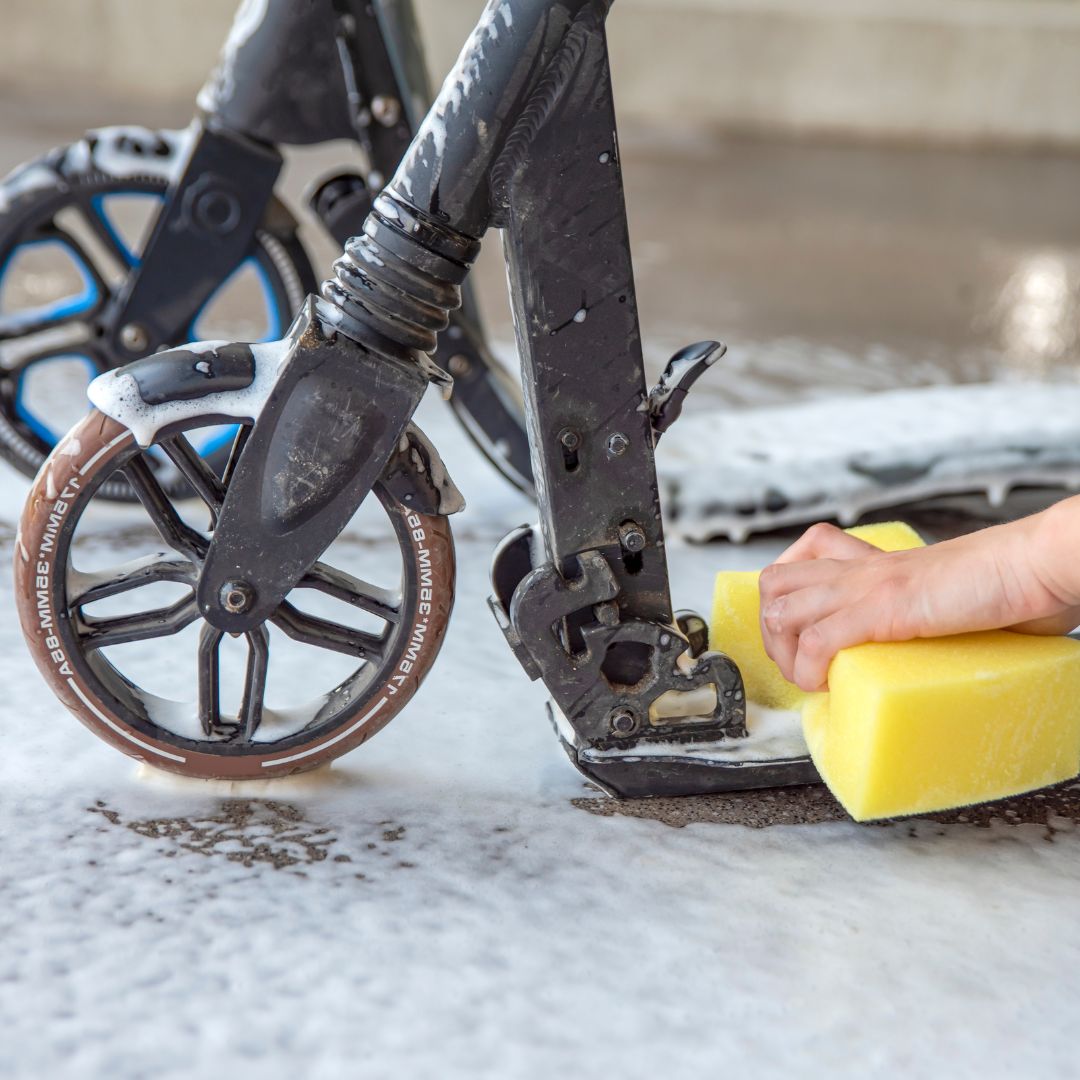
Updated: 14.05.25
Owning an electric scooter offers convenience and mobility, but it also demands responsible maintenance.
Regular cleaning ensures your scooter's longevity, safety, and optimal performance. Follow this guide to learn how to clean your electric scooter properly, from preparation to finishing touches.
Understanding Your Electric Scooter
Your scooter consists of key components—frame, wheels, motor, battery, and controls—each vulnerable to dirt, dust, and moisture.
Preparation: Safety and Supplies
Safety Precautions
- Ensure the scooter is off and unplugged.
- Wear protective gloves to avoid skin irritation and injuries.
Gather Supplies
- Mild detergent and distilled water.
- Soft cloths and soft-bristled brush.
- Lubricants for moving parts.
Step-by-Step Cleaning Process
1. Initial Inspection
Check for dirt, debris, and damage, focusing on wheels, electronics, and frame integrity.
2. Cleaning Frame and Components
Gently wipe surfaces with detergent solution using a soft cloth. Use a damp cloth carefully around electronics.
3. Cleaning Wheels and Tyres
Use a soft-bristled brush for stubborn dirt, followed by wiping with a detergent solution.
4. Battery Maintenance
Clean battery terminals with a dry cloth, ensuring no moisture enters the compartment. Follow manual guidelines.
5. Drying and Lubrication
Thoroughly dry your scooter and apply lubricant sparingly on moving parts to prevent rust.
Maintenance Tips and Storage
Regular cleaning and storing your scooter in a dry area protects it from environmental damage and ensures smooth performance.
Practical Cleaning Hacks
- Use baking soda for tough stains.
- A vinegar-water mix helps remove rust (test small areas first).
Troubleshooting and Professional Care
Address issues promptly; consult your scooter manual or seek professional help for complex maintenance, especially electrical problems.
Conclusion
Regular cleaning keeps your electric scooter reliable, safe, and looking great. Remember, a clean scooter is a happy scooter!
Frequently Asked Questions
How often should I clean my electric scooter?
Weekly for frequent use; monthly or bimonthly otherwise. Always clean after wet or muddy rides.
Are household cleaners safe for my electric scooter?
Mild detergents are safe; avoid harsh chemicals, especially near electronics.
What's the best way to dry my scooter after cleaning?
Use a soft towel and ensure thorough drying, particularly in crevices and around electronics.
Get in Touch 🚀
Loved our article on How To Clean Your Electric Scooter (THE RIGHT WAY)? Explore more wheely-awesome info!
Whether you're a parent or grandparent, we're here for all your kids ride-on toy questions!
Feeling click-happy? Visit RiiRoo.com.
Prefer chatting? Try our Live Chat!
Check Out Our Electric Ride-on Scooters





Share:
Here's the Ideal Pressure For Your Electric Scooter Tyres
Here's How to Take Your e-scooter Off Road